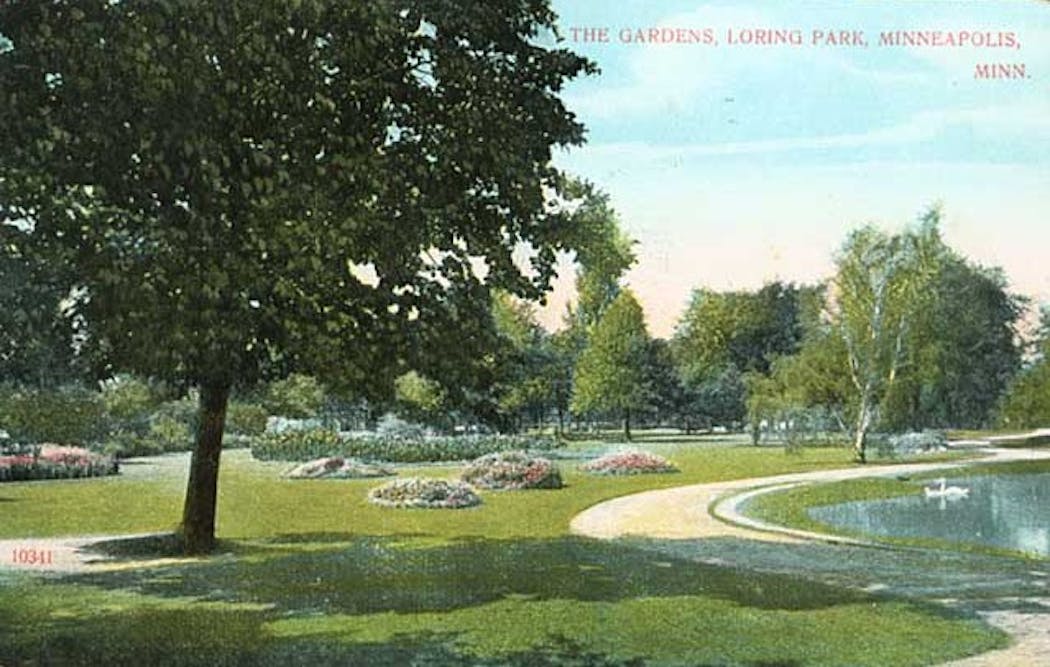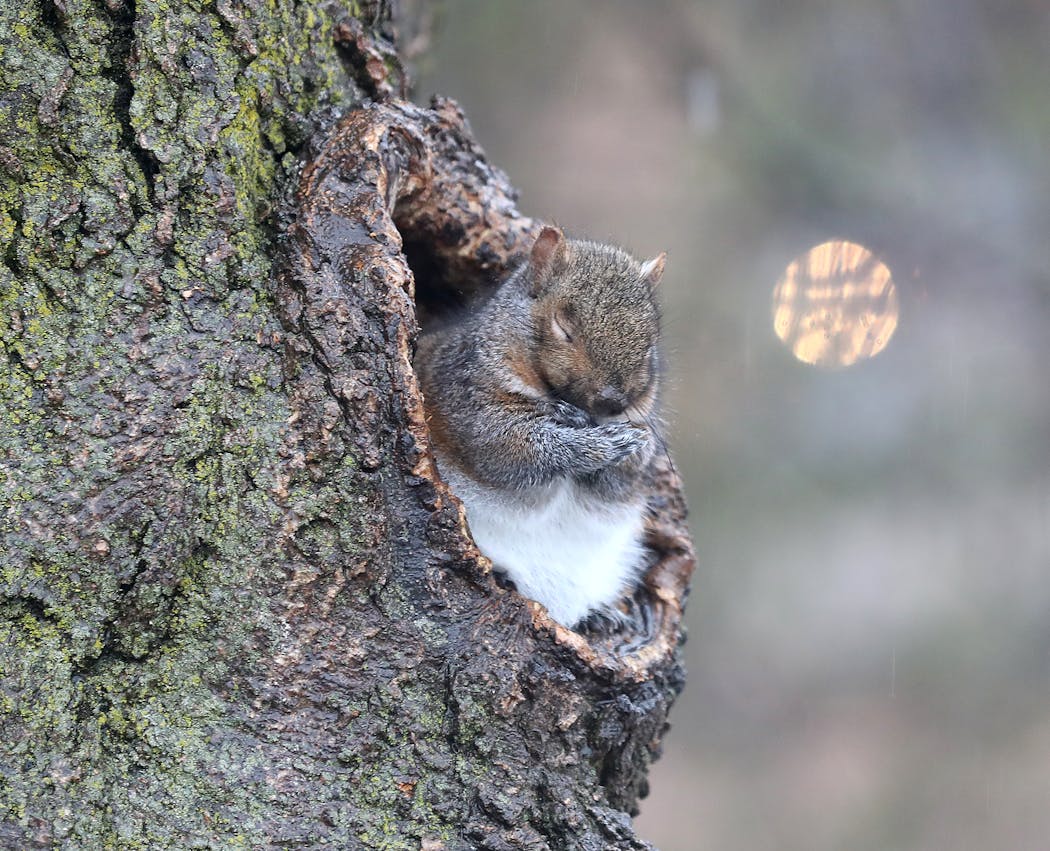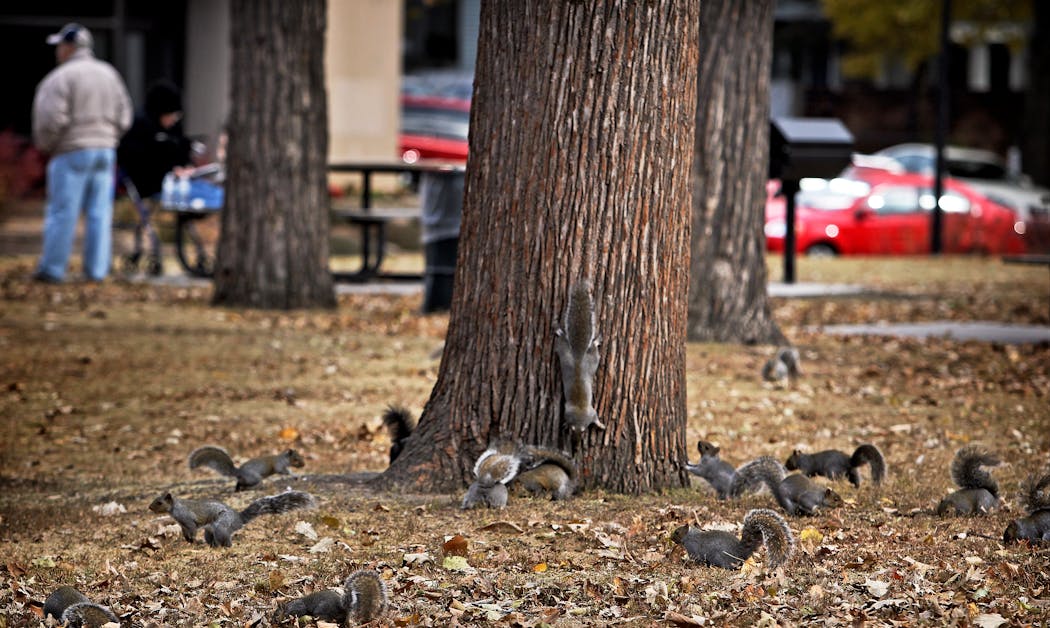Did a famed parks leader import gray squirrels to Minneapolis — and have the red ones killed?
Listen and subscribe to our podcast: Via Apple Podcasts | Spotify | Stitcher
Minneapolis parks are swarming with gray squirrels — those fat-cheeked, bushy-tailed tree rats that stalk picnics and snatch Doritos out of people's hands.
They're smart. They're audacious. And they might be overpopulated.
Reader Dennis Becker wanted to know if it was true that one of the founders of the Minneapolis park system, longtime superintendent Theodore Wirth, had imported gray squirrels to Minneapolis from afar. He sought answers from Curious Minnesota, the Star Tribune's reporting project fueled by reader questions.
"I heard they went around shooting all the red squirrels so they could have the gray squirrels," said Becker, who suggested it might be time to shoot the grays now. "They're such a nuisance, you know. They chew on everything and there's so many of them."
The answer is, amazingly, yes. Wirth did go out of his way to supplant one squirrel with another.
That's according to old newspaper articles, Minneapolis Park Board records and local park historian David C. Smith. Wirth, who did many heavy-handed things to reshape nature in pursuit of the perfect park, was actually quite proud of himself for the accomplishment.
It's hard to imagine parks today without the common gray squirrel — though it is not clear how much of the Twin Cities' urban squirrel population can be attributed to Wirth's effort. They were once a rare breed mostly found in forests, a sought-after lawn ornament for budding urban parks around the country.
A bird lover's mission
Wild gray squirrels were taken out of their forests and introduced to New York City's Central Park in the 1870s as a touch of nature for city dwellers. The founders of Minneapolis' park system were obsessed with the trend-setting Central Park. When Wirth became superintendent in 1904, he soon declared war on Loring Park's red squirrels.
Red squirrels were ugly, mean-spirited bastards guilty of every crime imaginable from eating baby songbirds to viciously attacking the reproductive organs of rival gray squirrels. The grays were friendlier, tamer and more adorable — or so went the prevailing wisdom of early 20th century outdoor experts.
Frustrated by the deaths of his beloved songbirds, Wirth hatched a multifaceted plan in 1909 to protect their population. He instituted a clampdown on children shooting birds and robbing their nests. And, more importantly, he ordered the park police to execute the dozen red squirrels living in Loring Park, according to the Minneapolis Tribune.
He replaced them with two dozen grey squirrels imported from Washington, D.C., which got off to an inauspicious start in Minnesota.
The squirrels arrived in Minneapolis via express delivery from Dr. Cecil French, a veterinarian and purveyor of live animals. They promptly broke out of their cage at the Adams Express Office and mobbed the storeroom staff, who thought they were rats, according to an account in the Washington-based Evening Star newspaper.
Once it was determined they were actually "respectable gray squirrels in quest of a meal and a little petting," the squirrels were given peanuts and the superintendent was called, according to the Star account.
The squirrels ultimately took residence in special Loring Park nesting boxes.
"Mr. Wirth has confidence they will appreciate the small sized cottages in the trees he has had arranged for their comfort and that they will not run away," the Tribune reported.
Wirth declared the resettlement of gray squirrels a success in his 1919 annual report.
"The gray squirrels, which were introduced in Loring Park about twelve years ago, have extended their hunting grounds over the entire system and city," the report stated.
"The people complain about them once in a while, because they are destructive, where they make their shelter in buildings, but in the main, they are a great attraction, and their friends among the people greatly outnumber their enemies."
'Cream-puff squirrels'
Wirth was a happy customer. But did he get what he paid for — a model park resident that got along with humans and songbirds, better in every way than the noxious red squirrel?
Yes and no.
University of Minnesota Ph.D. student Charlotte Devitz, who works with squirrels in her research on how wild animals handle urbanization, said there are legitimate behavioral differences between the small, scrappy reds and the fluffy grays.
"Red squirrels are the most difficult animals we have to handle. They are extremely aggressive," she said. "They will establish a territory and defend that territory, and despite gray squirrels being two or three times their size, they will fight the gray squirrels if they come into their territory."
Red squirrels are constantly yelling at people to keep their distance. They have specific diets of spruce and pine seeds, and little need for humans.
In contrast, urban gray squirrels have indiscriminate appetites. They love people, whom they view as nonthreatening bearers of food.
They adapted to city life so eagerly that by 1930, the Tribune was lamenting that Loring Park's squirrels had become spoiled "cream-puff squirrels" that bore little resemblance to their ancestral "true" gray squirrel of the American wilderness.
"Any day in Loring Park a squirrel may choose between ice cream cones, cake and a dozen kinds of sweetmeats, or enjoy all of them to his capacity," the Tribune reported. "Instinctively they still store acorns from the old oaks. But it is a lackadaisical effort."
Enemies abroad
But the virtues ascribed to gray squirrels in Wirth's time were exaggerated. Grays enjoy eating baby birds just as much as the next wild animal, said Jennifer Menken, the public collections manager at the Bell Museum. They're not above running up a tree and peeing on a person's head. They raid bird feeders. They take random bites out of garden tomatoes and dig up flower bulbs.
Gray squirrels also strip bark from trees when other food is scarce and carry squirrel pox, a gory disease that kills red squirrels. These crimes, among others, are why they are demonized in the United Kingdom as an American invasive while the red squirrel is treasured as a symbol of the vanishing English countryside, according to British wildlife historian Hilda Kean.
Across the pond, there are several organizations dedicated to catching and killing gray squirrels for many of the same excuses that Wirth and his contemporaries used to target red squirrels. The British have been working on that — by shooting or the old bag-and-whack method — ever since the 1930s without much success. They are now hoping squirrel contraceptives will do the trick.
If you'd like to submit a Curious Minnesota question, fill out the form below:
Read more Curious Minnesota stories:
Was the Minneapolis Park Board created to benefit wealthy land owners?
Why has the Park Board allowed the 'birthplace of Minneapolis' to deteriorate?
Are more wild animals moving into Minnesota's cities?
Why do inland cities like St. Paul have so many seagulls?
When did wild bison disappear from Minnesota?
Why is Minnesota the only mainland state with an abundance of wolves?








